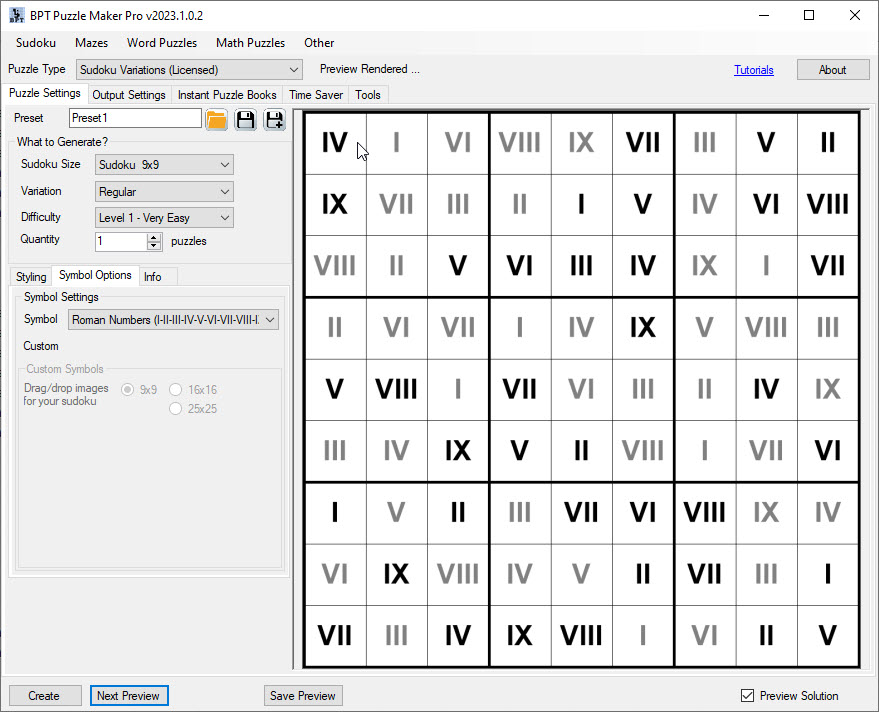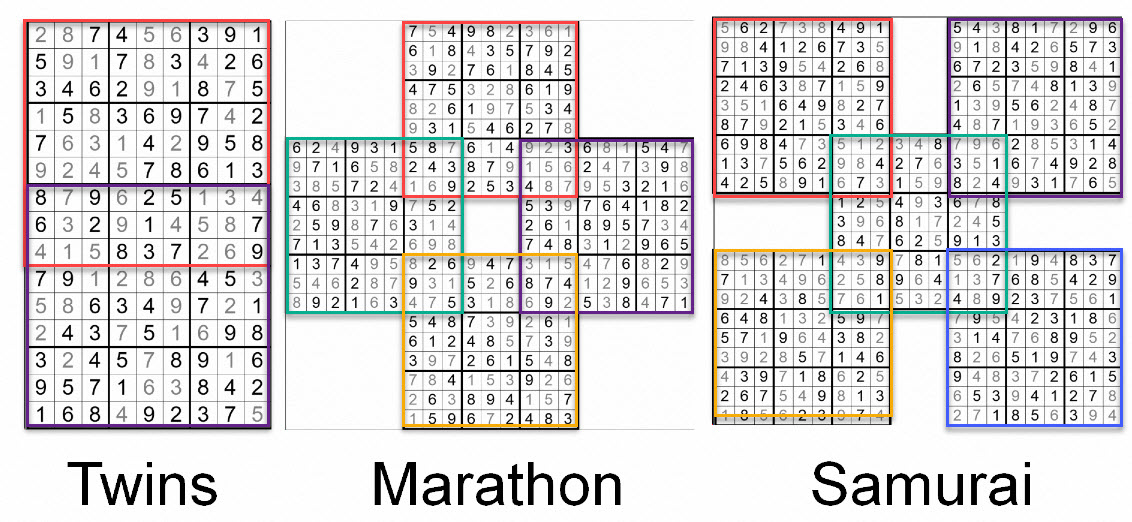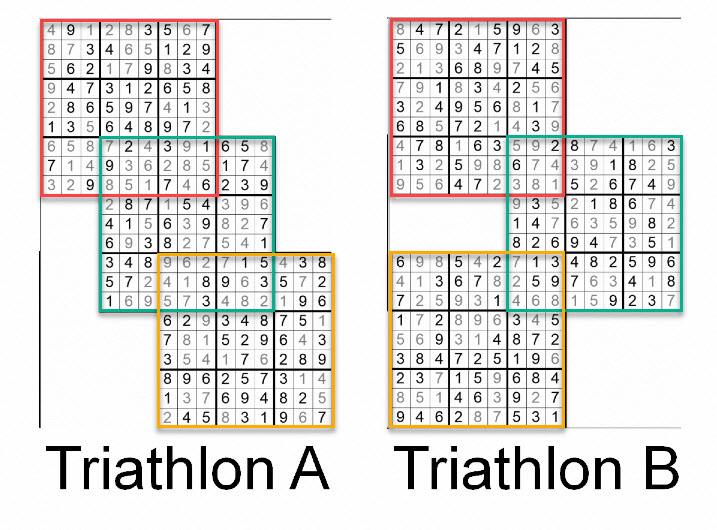How do I solve the Multidokus
Puzzle Maker Pro - Sudoku comes with many different variations for sudokus. Some of these may be a little confusing, so we'll explain how each sudoku works.
Standard Sudoku
The basic module for Sudoku 9x9 standard does exactly what it says on the tin. It creates a sudoku that is 9x9 squares, which is the most common variation. With Sudoku 9x9 Creative it's also possible to create sudokus with pictures, letters, or other symbols.

Different Sizes
We also have two different modules, for smaller or bigger squares. Sudoku Kids Edition has 4x4 sudokus, and 6x6 sudokus. Sudoku More Squares offers sudokus of the sizes 8×8, 10×10 and 15×15. Sudoku Large Squares 1 contains 12×12 and 16×16 sudokus, and Sudoku Large Squares 2 takes it to the extreme, with 14×14, 18×18, 20×20, 24×24 and 25×25 sudokus.
The largest we currently offer is 25x25. As it still has to be printed on a page, this is the largest option that still looks good.
Sudoku X and Hyper Sudoku
These are from the Sudoku Variations add-on. Both use the standard 9x9 shape, but they have additional difficulties.
The Sudoku X has added diagonals, where in each diagonal the numbers 1-9 appear once. The Hyper Sudoku has extra 3x3 squares overlayed, that also can only contain the numbers 1-9 once.

Multidokus
Multidokus are sudokus that have multiple sudokus overlapping. We have several variations of these. For the examples we'll be using the standard 9x9, but many of these can also be combined with the different sizes, depending on the modules that you own. These sudokus look intimidating, but once you realise they're built up out of multiple normal sudokus, they become very easy to solve.
So let's look into these sudokus per module. First, the sudokus from Sudoku Multidoku 1. This contains the variations Sudoku Twins, Samurai, Marathon and Triathlon.


As a visual aid, we have colourcoded these sudokus. As you can see, each multidoku is built up out of multiple overlapping 9x9 sudokus. This actually makes the multidokus slightly easier, because for the squares in the overlapping area you can use hints from both sudokus to figure out the solutions!
Now that you understand the basics of how the multidokus work, let's see how the Multidokus from Sudoku Multidoku 2 are built up. With these it can be slightly more difficult to find the 9x9 squares that build up the sudoku, but they're still very much there. The Sudoku Multidoku 2 module contains the following sudoku forms: Sensei, Cross, Gattai, Flower and Windmill.
So let's see what those look like.


That got complicated really quickly. The sensei has the least overlap of any multidoku, but the other ones in this set have multiple squares, and even some hidden sudoku squares in the middle of each.
However, you can still solve these the way you solve a normal sudoku. Just take it one square at a time, and use the overlapping squares to your advantage to solve all the sudokus!